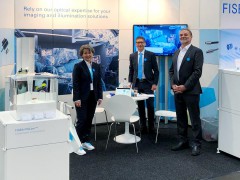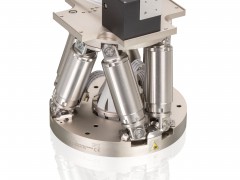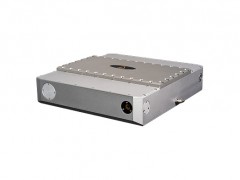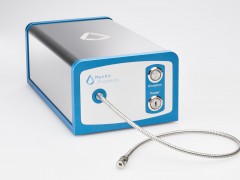
Scientists use laser technique to 3D print structures made of gold
source:lasersystemseurope
release:Nick
keywords: laser technique 3D print
Time:2018-12-12

The scientists used laser-induced forward transfer (LIFT) to 3D print a gold helix structure only micrometres in size. (Image: University of Twente)
Scientists at the University of Twente have published the results of a research project which found that a laser technique, which ejects ultra-tiny droplets of metal, enables the printing of 3D metal structures made from pure gold.
The technique will be useable in the printing of new 3D micro components for electronics or photonics.
The research was undertaken by the departments of Mechanics of Solids, Surfaces and Systems (MS3) and Design, Production and Management (DPM), both part of the Engineering Technology faculty of the University of Twente. This was in collaboration with Demcon, a spin-off company of the University of Twente.
The technique, known as laser-induced forward transfer (LIFT), was found to allow not only simple ‘piles’ of droplets to be 3D printed, but also complex overhanging structures like a helix of some microns in size, made of pure gold. It works by pointing an ultra-short pulse of green laser light onto a nanometre-thin metal film. This melts a metal droplet a few femtolitres in size, which is then ejected to its target, solidifying again after landing.
The university researchers found that they were able to build a structure using copper and gold microdroplets, where the copper acts as a mechanical support for the gold, and highlighted in their paper – published in Additive Manufacturing – the example of a helix printed with copper around it. Together with the helix, a copper ‘box’ can be printed, so that a droplet meant for the new winding of the helix is prevented from landing on the previous winding. After building the helix, drop by drop and layer by layer, the copper ‘support box’ can be chemically etched away, leaving a helix of pure gold, no more than a few tens of microns in size.
One challenge posed by the scientists was whether the two metals would mix at their interface and therefore affect the product’s quality after etching, but the results demonstrate that this is not the case. The researchers concluded that the LIFT technique is an important step towards ‘functionalisation’ of 3D printing, with potential use cases expected for materials used in 3D electronic circuits, micromechanic devices and sensing in – for example – biomedical applications.
Trumpf premieres green laser capable of printing copper and gold at Formnext
At the Formnext trade fair in Frankfurt this year, laser manufacturer Trumpf premiered a new green laser, the TruDisk 1020, which has a pulse function that enables it to be used to print pure copper and precious metals when combined with the firm's TruPrint 1000 3D printer.

Trumpf's green TruDisk 1020 disk laser can be used to print structures out of relfective materials such as copper and gold. (Image: Trumpf)
'Conventional systems use an infrared laser as the beam source, but its wavelength is too long and it can't weld highly reflective materials such as copper and gold,' explained Thomas Fehn, a general manager for additive manufacturing at Trumpf. 'This can be done with laser light in the green wavelength spectrum.'
The solution will be suitable for use in mechanical and plant engineering, as pure copper can be used to print particularly conductive inductors and heat exchangers. The green laser also holds great potential for printing gold in the jewelry industry, according to the firm, as it enables individual unique pieces to be produced on demand while simultaneously saving expensive material - current milling or casting techniques entail a loss of material.
- RoboSense is to Produce the First Chinese Multi-beam LiDAR
- China is to Accelerate the Development of Laser Hardening Application
- Han’s Laser Buys Canadian Fiber Specialist CorActive
- SPI Lasers continues it expansion in China, appointing a dedicated Sales Director
- Laser Coating Removal Robot for Aircraft
 FISBA exhibits Customized Solutions for Minimally Invasive Medical Endoscopic Devices at COMPAMED in
FISBA exhibits Customized Solutions for Minimally Invasive Medical Endoscopic Devices at COMPAMED in New Active Alignment System for the Coupling of Photonic Structures to Fiber Arrays
New Active Alignment System for the Coupling of Photonic Structures to Fiber Arrays A new industrial compression module by Amplitude
A new industrial compression module by Amplitude Menhir Photonics Introduces the MENHIR-1550 The Industry's First Turnkey Femtosecond Laser of
Menhir Photonics Introduces the MENHIR-1550 The Industry's First Turnkey Femtosecond Laser of Shenzhen DNE Laser introduced new generation D-FAST cutting machine (12000 W)
more>>
Shenzhen DNE Laser introduced new generation D-FAST cutting machine (12000 W)
more>>
